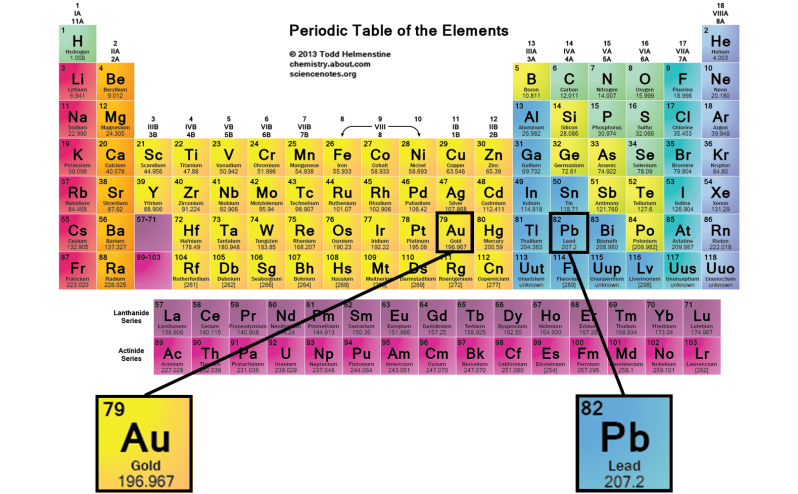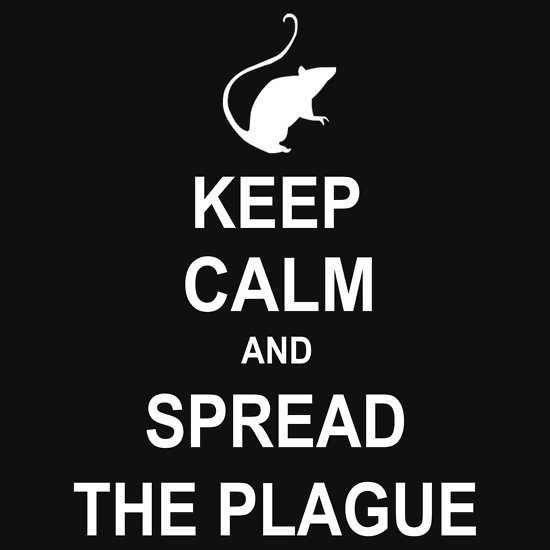How to turn lead into gold was the legendary question that plagued the alchemists of old. Their answer to this question was the belief in the existence of the fabled philosopher’s stone, a substance with the extraordinary ability to turn any common metal into gold (as well as offering eternal life and immortality because why not). Sadly, they never succeeded in their goal… but we have, and we didn’t even need the stone.

Alchemy
Alchemists were like the chemists, physicists and physicians of their day, their day being a really long time incidentally- possibly as early as 3500 BC and extending right up until the 19th century. But the most famous time of alchemy, where we in the west get most of our ideas of what alchemists did, was probably from the Renaissance period around the 14th century through to the eventual collapse of alchemy in the 18th century.
Their central beliefs combined religion and spirituality with magic and mythology to form an early ‘science’ that used laboratory techniques and experimental methods to create new chemicals, compounds and medicines as well as seeking spiritual enlightenment.
Although many people dismissed them as charlatans practising pseudoscience you can’t deny that they were really ambitious in their goals. These goals came from all fields of science and included, but were not limited to, transmuting common metals into gold, the creation of the elixir of immortality, the creation of a panacea able to cure all disease, the creation of a universal solvent (a liquid that anything can dissolve in, even gold) and achieving human spiritual perfection. Quite the shopping list. But as not to be too overwhelming for aspiring alchemists, the discovery of the philosopher’s stone was key to all of these things.
Above all though, they really had a special love of gold and its perceived perfection. As I wrote in my post on the black death, during the time of the plague alchemists even suggested swallowing gold as a cure. The idea being that the perfection of gold would counteract the corruption of the plague. It didn’t work sadly and they didn’t have their panacea yet so they couldn’t offer that either. Although, one of their ideas for their universal solvent would be to dissolve gold in it for its great medicinal properties, a possible panacea. Sadly they didn’t have that either. The point is though, they really liked gold.
Lead into gold
Now, with their love of gold, one of the central goals of alchemy was to get more of it. To that end they worked on transmuting common metals into gold, lead being the main metal they were interested in. Why lead you may ask? Well, you’ll have to try and stay with me for this explanation.
The Islamic philosopher Jabir ibn Hayyan was the guy who really started this belief way back in the 8th century. You see, he thought that every element was made up of four qualities; hotness, coldness, dryness and moistness. He went on to say that two of these qualities were external which is how they appear to us but that the other two qualities were internal and invisible to us.
Gold, he said, is externally hot and moist whereas lead is externally cold and dry. That meant that lead was internally hot and moist like gold. Therefore, if we could rearrange those qualities we could turn lead into gold. Of course, this reaction would require a catalyst and this catalyst was the philosopher’s stone. Take a minute for that to sink in.
The idea of transmuting lead into gold persisted for over a millenium until alchemy finally lost respect in favour of real chemistry in the 18th century. To add insult to injury, the new chemists were so serious in their intent to divorce chemistry from alchemy that they wrote so much against it that alchemy was demoted to the branch of science solely devoted to transmuting lead into gold.
The legacy of alchemy
The separation of alchemy from chemistry is really what gave rise to the modern belief that alchemists were all pseudoscientists. It reduced them to scientific frauds brought together in the ridiculous belief that they could magically change common metals into gold and the misguided quest for the mythical philosopher’s stone.
The fact is that alchemists, despite their many incorrect beliefs, were scientists and helped develop many techniques, medicines and pigments that we’ve either improved upon or still use outright today. Many of them were very good experimentalists with skills that wouldn’t be out of place in a laboratory today.
Indeed, one of the founders of modern chemistry and pioneers of the scientific method, Robert Boyle, was an alchemist, as was Isaac Newton who revolutionised physics with his ideas of gravitational force.
It’s easy to criticise the ideas of the past with our modern knowledge but we must never forget that something had to come first to get us to where we are now. So it was then and so it will be the case for scientists in the future who will no doubt criticise our own outdated techniques.
This is especially true when it turns out that they may not have been completely wrong after all…
Lead into gold – a modern approach
Where alchemists went wrong is that they didn’t know that lead and gold are two completely different elements, not compounds that can be changed. Thankfully, nowadays we have the periodic table which tells us that they are two different elements and you can see it below.

Now, you don’t need to understand the periodic table in any real detail and I’ve highlighted the only elements that we care about; Gold (Au) and Lead (Pb). But it’s nice to see the whole picture to appreciate that they’re close together in the table which tells us that they’re not very chemically dissimilar. They are, after all, both metals.
We do need to understand a small amount of chemistry to continue on so bear with me here. So, aside from the name, the only thing you need to know is that number in the upper left hand corner of the element; Gold is number 79 and Lead is number 82. That number is the number of protons in one atom of the element. The amount of protons an element has gives it all of its properties. If you’re holding a block of lead and a block of gold the only thing that makes them different, that gives them all the differences you can see and feel, is that lead has 82 protons and gold has 79. Pretty crazy.
One atom of gold will only ever have 79 protons, never more, never less. You can’t have gold with 20 protons any more than you can have gold with 100 protons. If someone gives you an unknown element and they tell you it has 79 protons, it’s gold. If you’re wearing a gold ring or necklace now, the gold in it has 79 protons just like every atom of gold in the entire world. The same is true of lead, lead has the number 82 in the upper left hand corner so one atom of lead always has 82 protons.
Good job, the chemistry lesson is over.
You can see then that lead has three more protons than gold. The question you might ask yourself then is whether removing protons from lead would give you gold. If you could take lead and selectively remove three protons from it, would you have gold? After all, I just told you that any element with 79 protons must be gold. Well, I have good news, that’s exactly what would happen. If you selectively removed three protons from lead you would indeed get gold.
Even better, we can do it. The kicker is it’s really damn hard, not to mention expensive. Oh, and you’ll need a particle accelerator.
Smashing lead into gold
A particle accelerator is a pretty cool piece of technology. You might already know that the largest particle accelerator we have, the Large Hadron Collider (LHC) is at CERN (Conseil Européen pour la Recherche Nucléaire) in Switzerland and despite the uproar caused when it first opened it didn’t immediately create a black hole when it was first switched on in 2010 and destroy the world.
Now, there are a whole host of things we can do with a particle accelerator but to keep it simple and relevant I’ll just tell you how we can use one to remove protons from lead.
 The LHC is essentially a long circular tunnel surrounded by extremely powerful electromagnets. Into this tunnel we can introduce a stream of single protons which are then accelerated around and around the circular tunnel by the electromagnets (like in the .gif to the right). Eventually the protons reach almost the speed of light and when the protons have this much energy they can smash into other atoms smashing more protons off of them. This is our relevant point.
The LHC is essentially a long circular tunnel surrounded by extremely powerful electromagnets. Into this tunnel we can introduce a stream of single protons which are then accelerated around and around the circular tunnel by the electromagnets (like in the .gif to the right). Eventually the protons reach almost the speed of light and when the protons have this much energy they can smash into other atoms smashing more protons off of them. This is our relevant point.
So in our example, the stream of protons is like the proverbial bull in the china shop full of lead atoms, smashing them indiscriminately. Unfortunately, we can’t exactly smash off the three protons we need to get gold, our bull is not particularly accurate, but if we smash enough lead the law of averages suggests that we’re bound to get some lead that only had three protons smashed off. And as we already said, lead that had 82 protons and lost three protons will have become gold which has 79 protons. If you could pull this off you’d be the envy of over a thousand years of alchemists.
If we can do it, why don’t we?
As of the time of writing we haven’t produced gold from lead in this way although it is definitely possible. We did, however, produce gold from bismuth back in the 80’s. Bismuth is the element next to lead and has 83 protons, just one more than lead. Therefore it needed to lose four protons to become gold.
The problem was, that although we produced gold it was in such small quantities as to be almost undetectable by modern methods. Particle accelerators, by definition, work with small quantities of things. Not just small, but minute quantities of things. After all, we use them to investigate things the size of atoms.
This is only one hurdle of course, producing small quantities of things wouldn’t be such a big deal on is own. Unfortunately, it’s also prohibitively expensive.
When the bismuth experiment was done in the 80’s, it cost approximately $5000 per hour to use the particle accelerator and they used it for about a day to get the results they did. Scaling up their results to produce an ounce (~28 g) of gold would have cost in the region of $1 quadrillion.
The price of an ounce of gold at the time was $560.



